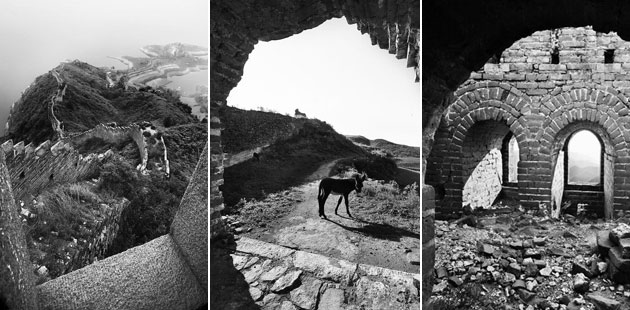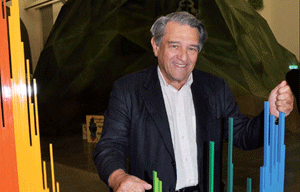One artist and his dog
Updated: 2011-12-04 17:24
By Zhang Zixuan (China Daily)
|
|||||||||
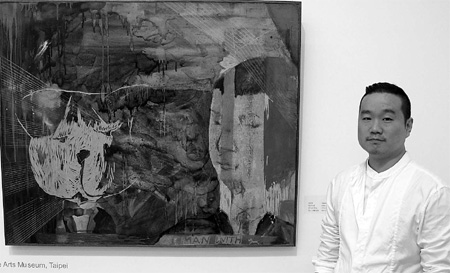 |
|
Tang Jo-hung poses by one of his paintings, Man With a Dog, at 798 Art Zone's Frank Lin Art Center, in Beijing. Zhang Zixuan / China Daily |
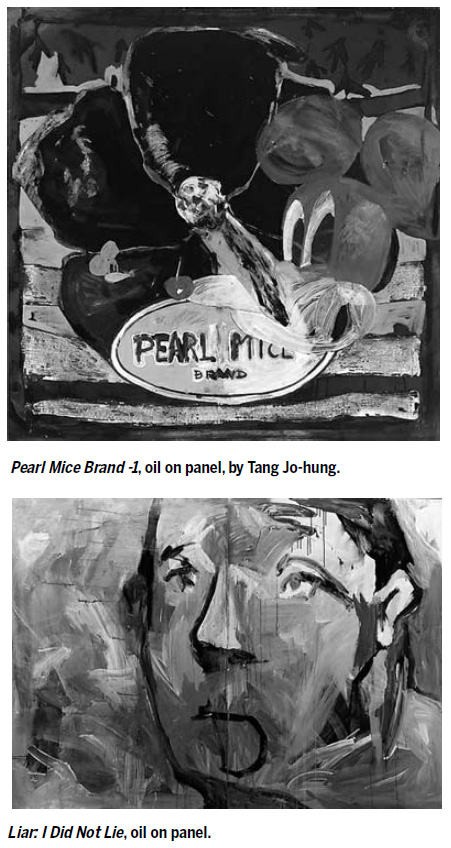
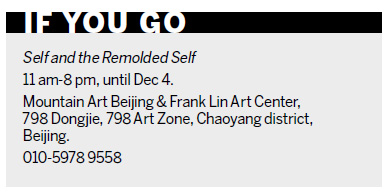 |
Tang Jo-hung's exhibition focuses on the subject of self through symbols such as his pet dog and playing cards. Zhang Zixuan finds out more.
'A dog could be my other self," says Taiwan artist Tang Jo-hung.
The 36-year-old brings 13 newly created oil paintings to the Frank Lin Art Center at 798 Art Zone in Beijing and is happy to discuss the eternal subject of "self" with visitors to the exhibition at his first mainland solo show, Self and the Remolded Self.
The first impression of Tang's works is of the complexity of colors and textures clustered on the panels. Milk white, transparent black and pork-liver red appear in bizarre shapes, with textures created by daubing, scratching and coating. Symbols such as a man, dog and playing cards are frequently repeated.
It seems quite natural to associate Tang's works with Spanish Expressionism, especially when informed that Tang received his master's degree in fine art at University of Salamanca in Spain, in 2002.
"The richness of colors and textures in my works may be more or less borrowed from Spain, since Spanish Expressionism focuses a lot on plastic arts. But my main subject existed previously, when I studied in Taiwan," he says.
Tang started his exploration of "self" when he was an undergraduate at Taiwan's Tunghai University.
Instead of adopting the two major ways of self-portraiture - either profiling physical appearance or spiritual thought - Tang is "more philosophical".
"There are many different types of figures in my self-portraits, but they are all based on the real me," Tang says. "The more I recompose and interpret them, the closer they come to the real me," explains Tang, who calls the creative process "autobiographical".
For instance, the dog figure in his works is based on Tang's former pet dog, Cookey.
The hound had a computer chip implanted with his name and contact details, as part of the pet registration process. He wandered off, but was mysteriously retrieved six months later with the help of the chip.
"I felt connected to the dog since it carried my name," Tang says. "I transferred my self expression onto the dog, so we were like two-in-one and able to represent each other."
Tang applied this thinking to his paintings. His work, Man With a Dog, is one of the best examples.
Another thing viewers may notice about Tang's works is that Tang only paints on wooden boards, rather than canvas.
"The hardness and flatness of wood ensures the continuity of every stroke," he explains, adding that he doesn't like the rhythm of his paintings being interrupted by fixing broken lines.
More importantly, Tang considers wood to be another layer of painting, while the knife becomes his brush. He carves patterns into the board as a necessary component of his paintings.
"With canvas, I can only add things on it, but with wood I can dig into it, creating a new space relationship," Tang says.
"Tang's works reminded me at first glance of my favorite Spanish artist Antoni Tapies," says Frank Lin, curator of the Frank Lin Art Center, part of the Taiwan-based Mountain Art Foundation. "But when I looked again, I saw a spirit only Asian artists can express."
As a post-1970s-born artist, Tang's Self series has won him a following, but Tang prefers to see himself as an "outsider" since his works are "non-mainstream" compared with the currently popular Minimalist style in Taiwan.
"I'd rather define my style as 'Inward Personalism' than Expressionism, with the core embodying individual diversity in regard both the theme and painting techniques."
Talking about his future plans, Tang says he has been using bright colors for a long time and he plans to concentrate on what he calls "colorful grays" in the future.




